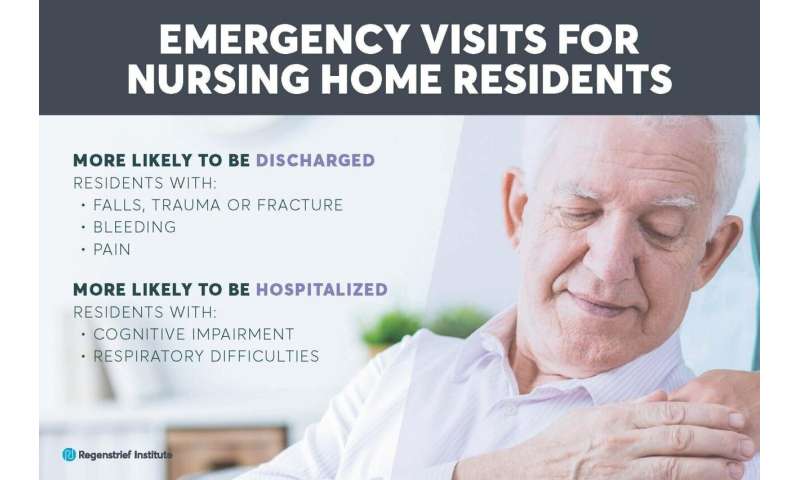Nursing home residents with cognitive impairment more likely to be admitted to hospital


Transfers from the nursing home to the emergency department (ED) or the hospital can have negative longer-term impact on the health of older adults. A new study from Regenstrief Institute and Indiana University School of Medicine looked at which residents were most likely to be admitted to the hospital after a trip to the ED with the hope of identifying areas to improve care and reduce unnecessary transfers.
The study team analyzed hundreds of transfers from the nursing facility to the ED and found the factors most associated with discharge back to the facility were:
- Falls, trauma or fracture
- Bleeding (non-gastrointestinal)
- Pain
Residents who had the following characteristics were more likely to be admitted to the hospital following an ED visit:
- Cognitive impairment
- Respiratory difficulties
“Transfers of care can be very difficult on the patient. Our goal in analyzing this data is to identify new opportunities to improve care, whether it’s preventing transfers to the emergency department or finding ways to avoid hospital admissions,” said Kathleen Unroe, M.D., MHA, first author of the paper, Regenstrief research scientist and associate professor of medicine at IU School of Medicine. “This information helps us understand what ailments could potentially be treated in the nursing home, avoiding a potentially risky transfer of care.”
About one quarter of nursing facility residents will experience a transfer to the hospital over the course of a year. There is a significant likelihood of reduced functioning and overall negative impact on their health after discharge from the hospital.
Analyzing the data for hospital admission
The research team looked at 867 long-stay nursing home facility residents enrolled in the OPTIMISTIC project. OPTIMISTIC (Optimizing Patient Transfers, Impacting Medical quality, Improving Symptoms—Transforming Institutional Care) was a demonstration project funded by the Centers for Medicare and Medicaid that successfully reduced potentially avoidable hospitalizations of people in nursing homes.
“Through OPTIMISTIC, we’ve determined that we can reduce avoidable hospitalizations. The next step is to gain a more nuanced understanding of transfers,” said Susan Hickman, Ph.D., senior author on the paper and director of Indiana University Center for Aging Research at Regenstrief Institute. “This helps us find opportunities for improvement from both the facility perspective and the emergency department perspective.”
Source: Read Full Article